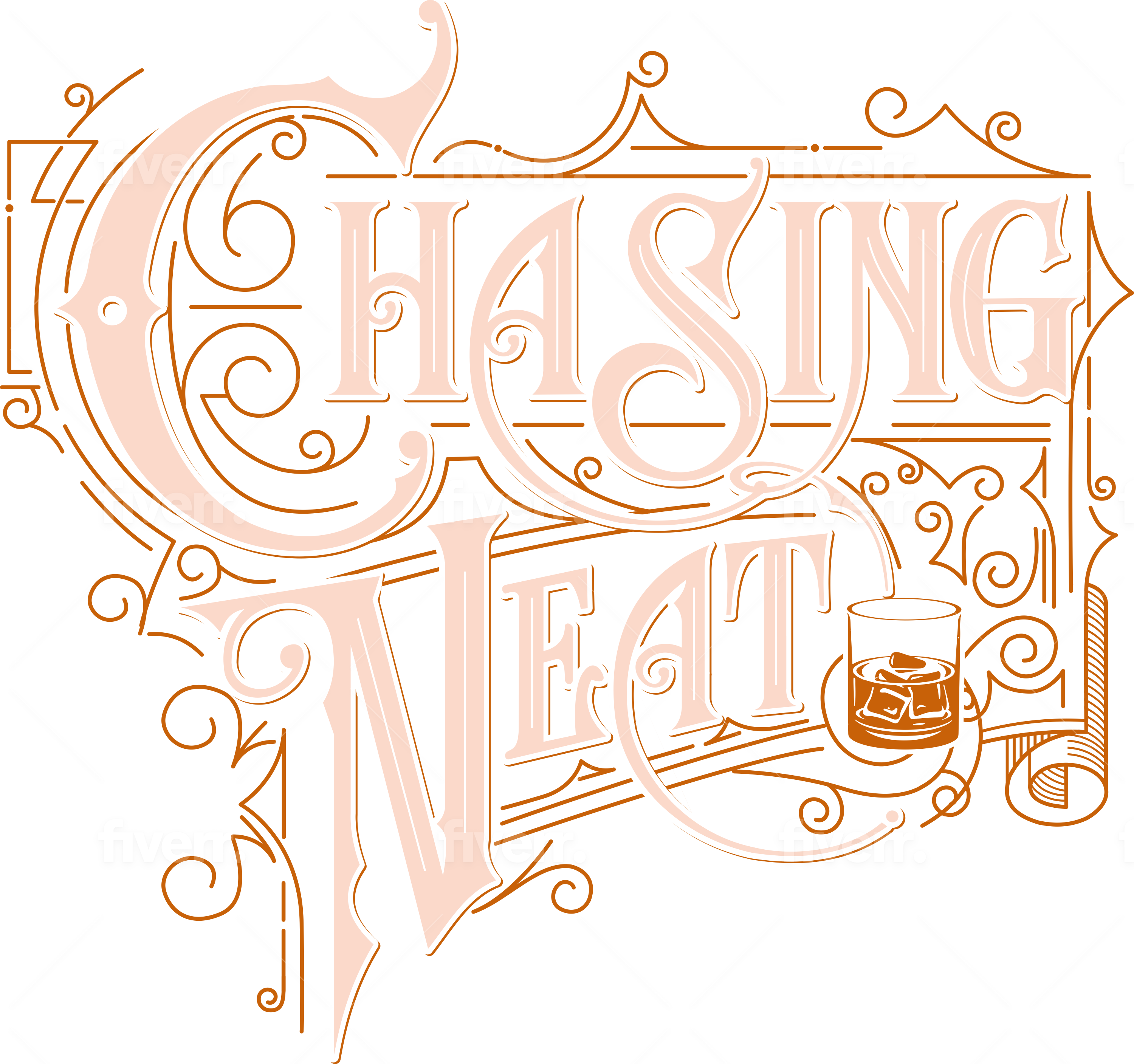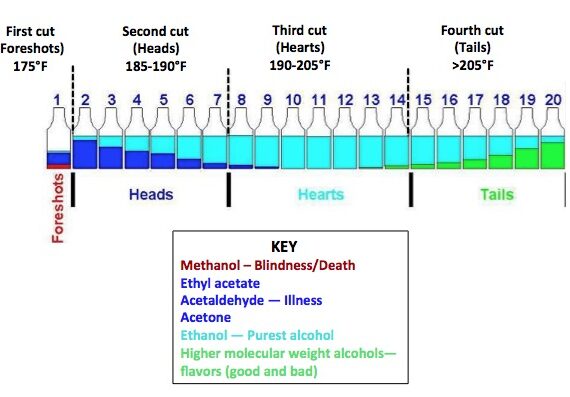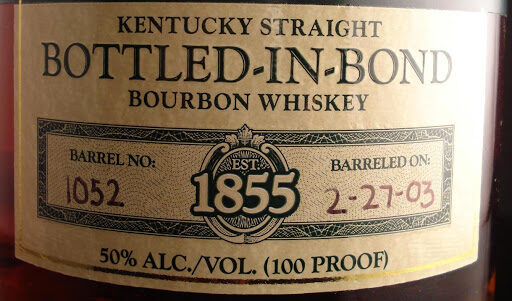A
ALLIGATOR CHAR: The most common level at which the inside of a barrel is charred is a number 4. The scale goes from 1-4. It is termed this because of the blistering on the wood surface, caused by using a flame to burn the inside of a barrel, resembling the skin on an alligator.
ANGELS’ SHARE: The amount of bourbon that evaporates, from within the barral, during the aging process.
B
BACKSET: The think liquid that remains after a batch of Whisk(e)y mash is distilled. A portion is added to the next batch when making a “sour mash” whisk(e)y to ensure consistent flavor (much like a sourdough bread starter). Also known as setback, stillage and spent beer.
BARREL PROOF/BARREL STRENGTH: Bourbon bottled straight from the barrel, with no water added to proof it down. Also known as cask strength.
BOTTLED-IN-BOND (BIB): Under the Bottled-in-Bond Act of 1897, the very first consumer-protection measure, bottled-in-bond bourbon has to be produced in one distillation season by one distiller at one distillery; aged for at least four years in a government-bonded warehouse; and bottled at 100 proof with nothing added but water.
BUNG: The wooden plug or stopper, in a barrel, that seals the hole used to fill it. It is generally made out of poplar wood.
BUNG KNOCKER: The tool used to strike a chisel to remove the bung; resembles a small sledgehammer.
C
CHARRING: This process refers to how burnt the insides of a new barrel is. There are four levels of char, and level three is the most common. A level three means a barrel is charred for about 55 seconds. The char level, and the “toasted” layer underneath (known as the “red layer”), produce various flavor notes. Vanilla flavor is produced when the lignin in the red layer changes into vanillin during the aging process.
CHILL-FILTERED: Whisk(e)y that has been chilled and passed through a series of filters to remove esters, fatty acids, and proteins before bottling so that it doesn’t cloud when water or ice is added to it in a glass. Producers who favor chill-filtering say consumers view a cloudy whisk(e)y as inferior. Those opposed say that removing the natural byproducts of distilling dilutes the flavor.
COLUMN STILL: A tall metal tub or column, usually copper or stainless steel, fitted inside with a series of perforated horizontal plates that separate alcohol from water during first distillation as the distillate steams up. Also called a continuous still.
D
DEVIL’S CUT: The several gallons of bourbon that are lost because they have soaked into the walls of the barrel.
DISTILLER’S BEER: The thick, fermented liquid that enters the still for first distillation.
DOUBLER: Copper still used for second distillation of whisk(e)y that removes impurities and concentrates the alcohol.
F
FERMENTATION: When yeast converts sugar into alcohol and carbon dioxide.
FINISH: The vapors you continue to smell, taste and feel, after you swallow a whisk(e)y.
FINISHING: Changing/enhancing the flavor of bourbon by additional aging in a second barrel-sometimes another oak barrel, but often a barrel that has been used to age a fortified spirit such as Port wine or Sherry. These spirits are no longer technically bourbon because a flavor has been added.
H
HEADS: The first 5 percent or so of the alcohol to evaporate during distillation, which is then condensed, collected, and discarded because it is high in undesirable compuhd such as methane.
HEARTS: The second, and longest, percentage of alcohol to come off the still, this is collected and but into barrels to age. (TAILS: This last, low-proof segment contains usable alcohol but also has some impurities. It’s captured and later redistilled.)
HONEY BARREL: Term used for a particularly tasty barrel of whisk(e)y that will likely be bottled as a single barrel product.
L
LOW WINES/HIGH WINES: Low wines are the liquid that goes into a doubler after first distillation; high wines emerge from the doubler following second distillation.
M
MASH: Mixture of cooked grains and water to which yeast is added to begin fermentation.
MASH BILL: The grain recipe for bourbon or other whisk(e)y.
MASH TUB: The large container in which milled grains are cooked in water in order to break down their starches before fermentation. Also known as a cooker.
MOONSHINE: Until recently, moonshine meant untaxed liquor where people went to jail for making and/or selling it. While distillers will still be punished if they make untaxed liquor, moonshine has become a distiller’s term for unaged spirit that could have become whisk(e)y if it was put into a barrel.
P
POT STILL: Another type of whisk(e)y still. Heat is applied directly to the pot containing the mash, and the resulting alcohol vapors travel through a condensing coil. The spent mash must be cleaned out each time, so this is known as batch distilling, rather than continuous distillation.
PROOF: The measure of alcohol in a spirit. In the United States, it’s expressed as double the percentage of the alcohol by volume (ABV).
R
RICK HOUSE: The building in which the barrels of whisk(e)y are aged. Also called a warehouse or rackhouse.
RICK HOUSE CAT: Many distilleries have a cat on their premise. Historically and still today, used for keeping rodents away from the grains.
S
SINGLE BARREL WHISK(E)Y: Whisk(e)y bottled from one barrel that has not been mingled with any other whisk(e)y.
SMALL BATCH WHISK(E)Y: Whisk(e)y that has been produced by mingling the contents from several barrels. There is no official definition; the number of barrels is up to the distiller.
STRAIGHT BOURBON/WHISK(E)Y: Whisk(e)y that has been aged for a minimum of 2 years.
SOUR MASH/SWEET MASH: Two methods for making whisk(e)y or bourbon. In the sour mash method, a portion of the backset is added to the next batch of mash during fermentation to balance out the pH levels and ensure consistency. In the sweet mash method, a brand-new batch is produced each time.
STILL: Two typical stills are Pot and Column stills.
STRAIGHT UP/UP: Sometimes considered interchangeable, these terms actually have different meanings. “straight up” means bourbon neat, with no ice. “Up” refers to a drink that is shaken with ice, then strained into a stemmed glass.
SWEATING THE BARREL: A process to reclaim some of the devil’s cut in which an empty, used bourbon barrel is filled with water and rolled on its side over a period of days or weeks.
T
TAILS: This last, low-proof segment contains usable alcohol but also has some impurities. It’s captured and later redistilled.
THIEF: A long tubular device that is used to insert into the bung hole of a barrel in order to retrieve samples of the spirit inside.
THUMPER: Similar to a doubler, as low wines enter in a vapor state and then high wines exit, these vessels make a thumping sound as the vapors bubble through the water.
TOASTING: A lighter level of heat applied to the inside of a barrel or barrel head that helps to mellow the tannins and released vanillins and other flavors.
W
WHEATED BOURBON: Bourbon with a mash bill that contains wheat as the secondary grain, rather than rye. Also referred to as a “wheater.”
WHISK(E)Y THIEF: A long tube or “straw,” often made of copper, used to draw whisk(e)y from a barrel for sampling.
WHITE DOG: Bourbon in its clear state as it leaves the still. Also known as “new make.”



